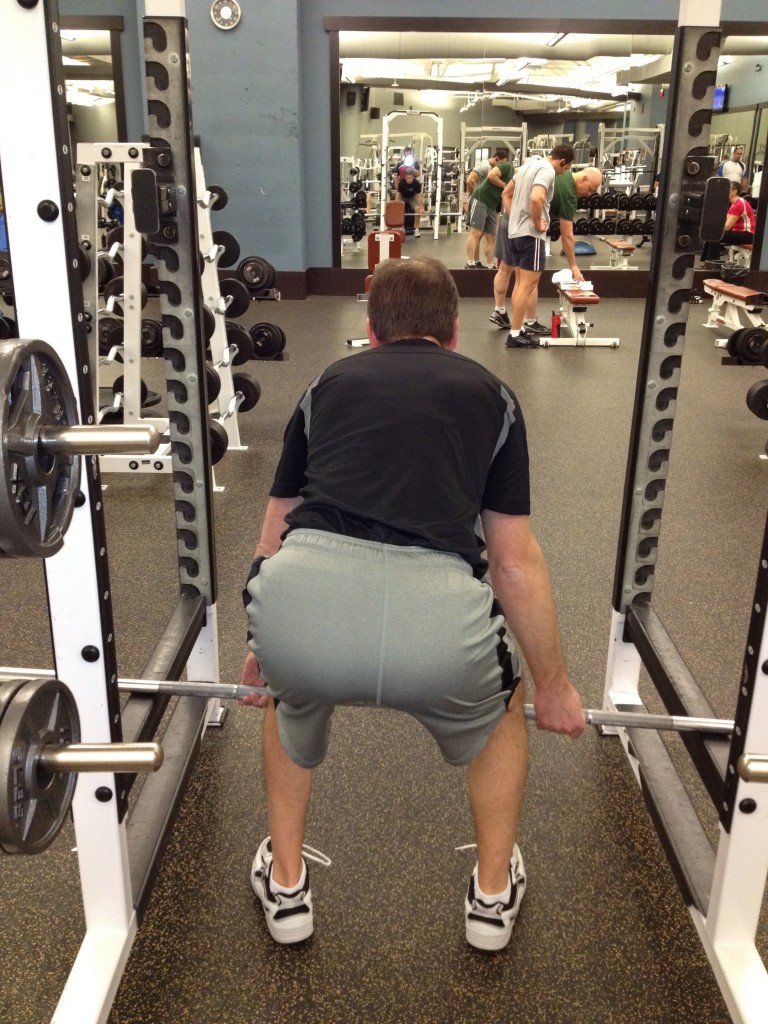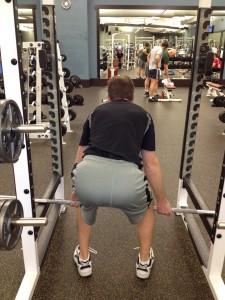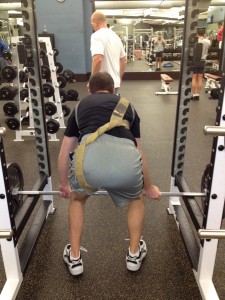Guiding the Movement: Corrective Banding
I’m typically not one to try to push a round peg into a square hole. Years spent working in my dad’s shop taught me enough that if you try to make something fit that just doesn’t want to, bad things are probably going to happen. I know I messed up my fair share of carburetors and intake manifolds trying to figure this one out.
It’s pretty similar in the fitness world. Some people just aren’t ready to deadlift, squat, bench, or overhead press. Does that mean they never will? Nope, just that they are ready now. Pushing them into it right away is a recipe for disaster as the body creates crazy compensation patterns, overloads inefficient tissues, and makes you look like a jack-bag for telling your client they’re doing great, when clearly they aren’t.
Instead, I’m willing to work on regressions for as long as it takes to get the person the requisite strength, mobility and stability to perform the exercise, and that eventually end up getting someone moving ungodly amounts of weight while trying to resist the urge to spackle their underwear.
That being said, there is also a need to try to groove the pattern with minimal weight and work on corrective measures to assist in developing the mobility, strength and stability in the specific movement. Take a client I’ve been working with for a few months as an example. He has some hemiplasic mobility and strength issues on his right side and wants to try to reduce the imbalance as much as possible while still getting stronger, leaner and more jacked than a Swiss Army Knife (jackknife. Get it? I know, witty.)
Here’s an example of his set up with no weight on the bar, getting ready to do his first pull and feeling like he’s completely balanced and as stable as possible:
Now I could spend a lot of time working on improving his ankle, hip and shoulder mobility on that side, or I could have him start deadlifting, which would improve his ankle, hip and shoulder mobility in one movement. The problem exists when something this glaringly out of balance presents itself, the only solution is to find a way to get him back into balance. I had him work on shifting his weight (no dice), flexing differently (uh uh), working with a higher starting position (minimal benefit), and every manner of direct and indirect corrections I could get going. Nothing really worked.
After the second session of trying to get him to move differently with almost no weight, I figured I would try something. I grabbed a thick superband and looped it around his left hip and over his right shoulder with a few twists in the middle to shorten it and create some tension in the system. Here’s the end result:
Big improvement in positioning. The banding helped to pull his pelvis back to neutral while getting his shoulder to retract and depress more efficiently. It didn’t solve the problem, but will help to get his body thinking about the positioning a little differently compared to if he were to try it without any assistance at all. He still has some limitations, so the weight won’t get to be anywhere close to maximum just yet.
Now I’d love to take the credit for this one, but it was one of those “give it a try and see” acts that seemed to have some stick to it. It’s not going to be a long-term solution for him, and even then after doing his main working sets I drop the weight down to about half and have him rep it out without the band to see if he stays in the right place. Most of the time he’s pretty close, which helps him to remember the positioning more for the next workout. In between, we go through mobility drills, strength training, and all manner of fun things to keep him from busting loose and ripping in half.
The point of the post was that sometimes you just have to be willing to be creative and try something new, not knowing what the end outcome may be. All theories are great until put into practice. Seeing whether something works or not, and not being willing to pull the plug if it doesn’t, may be one of the things separating you from reaching your goals. Adapt, analyze, alter, and advance.





10 Responses to Guiding the Movement: Corrective Banding